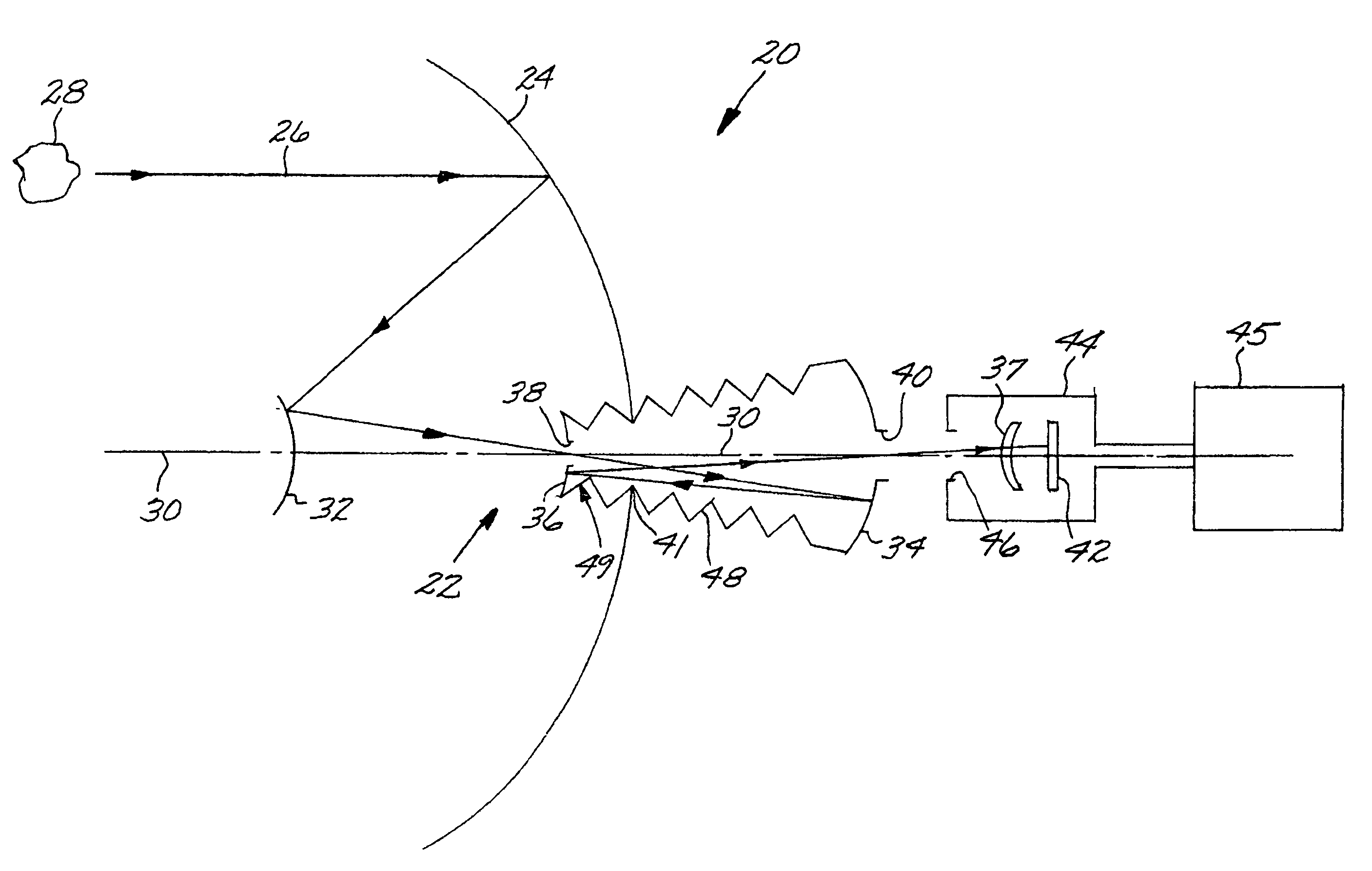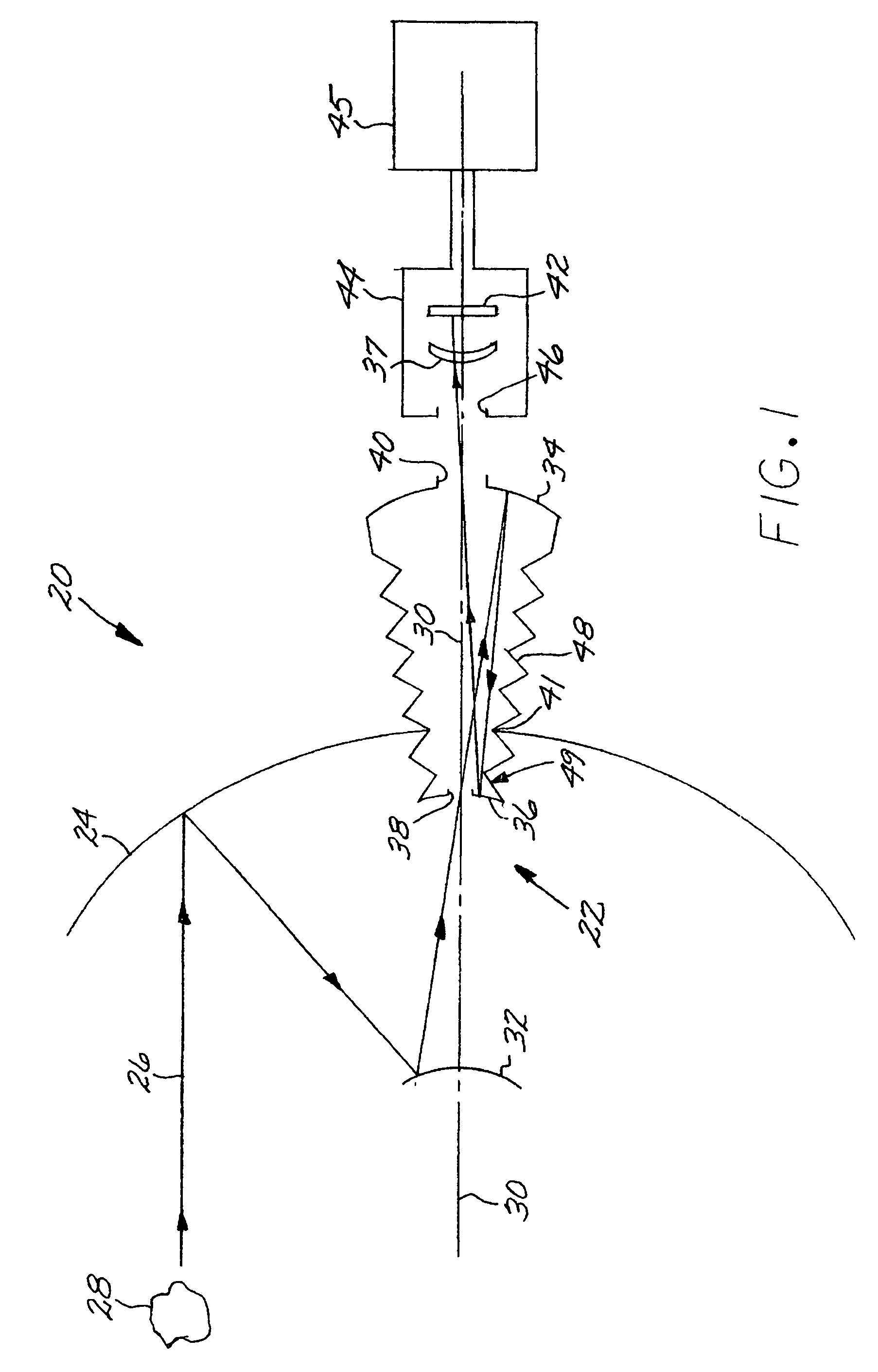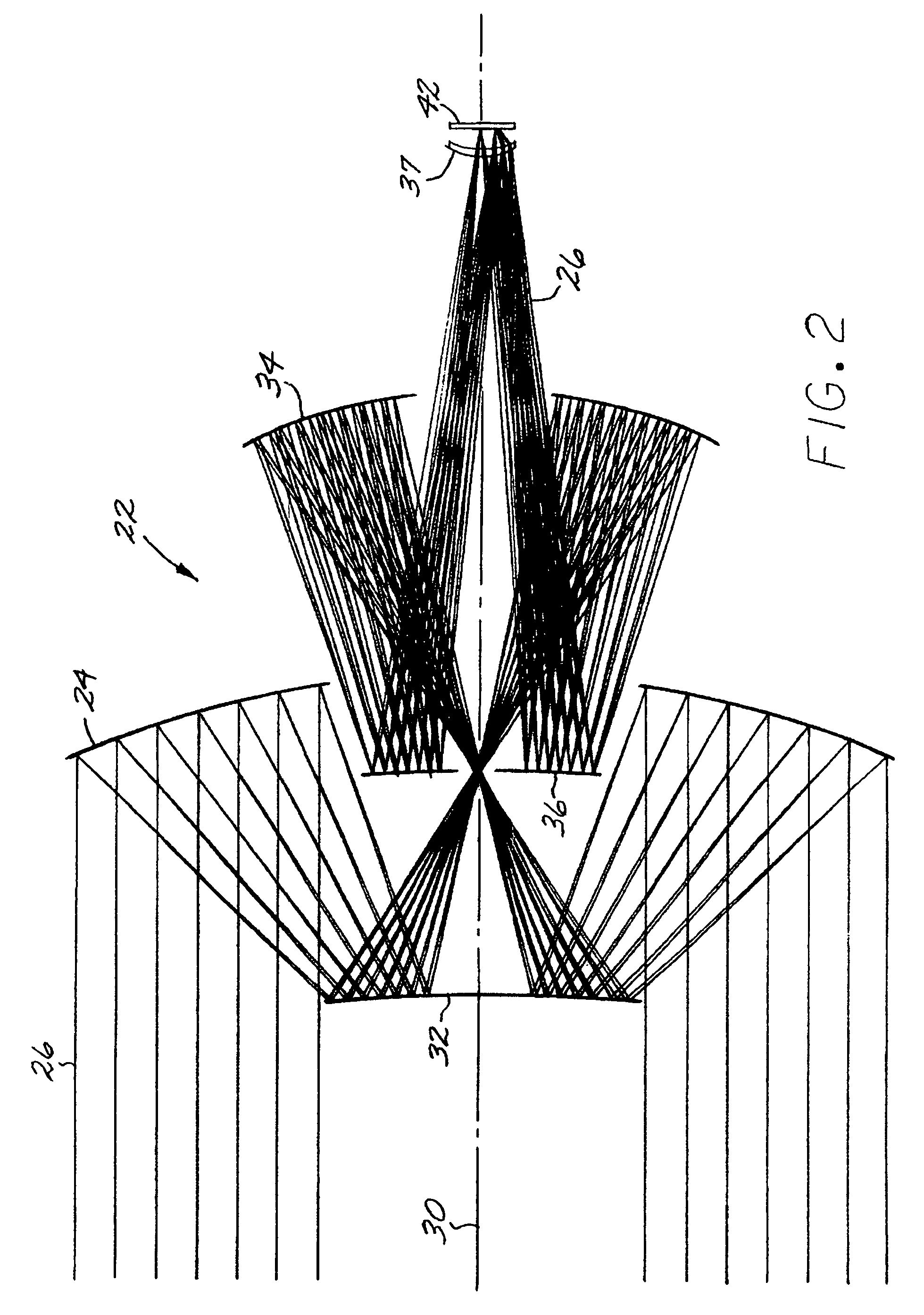Imaging optical system including a telescope and an uncooled warm-stop structure
a warm-stop structure and optical system technology, applied in the field of imaging optical systems, can solve the problems of affecting the viewed image as noise, requiring heavy supporting structure, difficult and expensive manufacturing, alignment, testing, etc., and achieve the effect of avoiding adverse effects of warm structure and facilitating rapid cooling
- Summary
- Abstract
- Description
- Claims
- Application Information
AI Technical Summary
Benefits of technology
Problems solved by technology
Method used
Image
Examples
Embodiment Construction
[0017]FIG. 1 depicts an imaging optical system 20 that includes a telescope 22, and FIG. 2 is a ray-path drawing of the telescope 22. The telescope 22 has a positive-optical-power primary mirror 24 that receives a light beam 26 from an external source 28 parallel to a beam axis 30. The light beam 26 may be of any operable wavelength, but is preferably an infrared light beam. A negative-optical-power secondary mirror 32 receives the light beam 26 reflected from the primary mirror 24. A positive-optical-power tertiary mirror 34 receives the light beam 26 reflected from the secondary mirror 32. A negative-optical-power quaternary mirror 36 receives the light beam 26 reflected from the tertiary mirror 34. The light beam 26 reflected from the quaternary mirror 36 passes through a positive-optical-power field lens 37. Preferably, the sum of the optical powers of the primary mirror 24, the secondary mirror 32, the tertiary mirror 34, the quaternary mirror 36, and the field lens 37 is subst...
PUM
 Login to View More
Login to View More Abstract
Description
Claims
Application Information
 Login to View More
Login to View More - R&D
- Intellectual Property
- Life Sciences
- Materials
- Tech Scout
- Unparalleled Data Quality
- Higher Quality Content
- 60% Fewer Hallucinations
Browse by: Latest US Patents, China's latest patents, Technical Efficacy Thesaurus, Application Domain, Technology Topic, Popular Technical Reports.
© 2025 PatSnap. All rights reserved.Legal|Privacy policy|Modern Slavery Act Transparency Statement|Sitemap|About US| Contact US: help@patsnap.com



